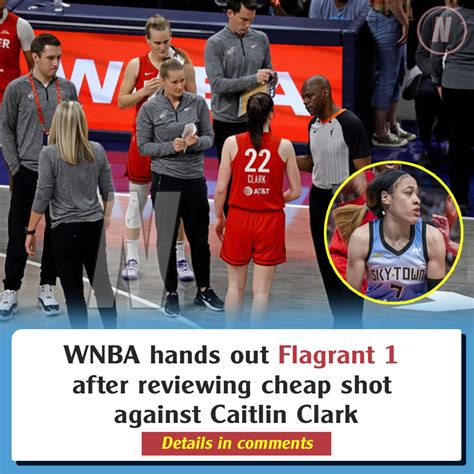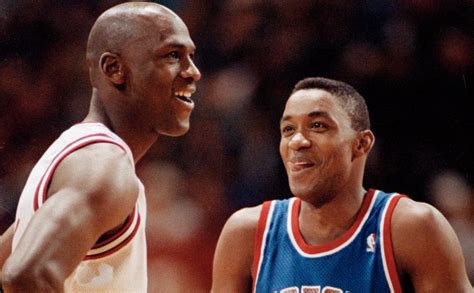
The WNBA has fined Marina Mabrey of the Chicago Sky $1,000 for making unnecessary contact with Indiana Fever guard Caitlin Clark, upgrading the foul from a common foul to a Flagrant Foul 1 after league review. This decision comes after a sequence during Saturday’s game where Mabrey knocked Clark to the floor while vying for position.
The WNBA announced the upgraded foul and subsequent fine on Sunday. The incident occurred with 5:46 remaining in the third quarter of the Sky’s 88-87 victory over the Fever. Initially, the referees assessed a common foul on the play. However, after reviewing the game film, the league determined that the contact met the criteria for a Flagrant Foul 1, which is defined as “unnecessary contact committed by a player against an opponent.”
“Based on a League review, the foul called on Chicago Sky guard Marina Mabrey against Indiana Fever guard Caitlin Clark was upgraded to a Flagrant Foul 1,” the WNBA stated in its official announcement.
The play in question involved Mabrey and Clark jostling for position as the Fever attempted to inbound the ball. As Clark moved to set a screen, Mabrey appeared to extend her arm and shoulder, making contact with Clark’s head and causing her to fall to the court. Clark immediately signaled to the referees, and after a brief discussion, a common foul was called.
The upgraded foul has reignited discussions surrounding the physicality of the WNBA and the treatment of rookie sensation Caitlin Clark. Clark, who entered the league as the No. 1 overall pick in the 2024 WNBA Draft, has quickly become one of the league’s most recognizable faces. Her arrival has brought increased attention, viewership, and revenue to the WNBA, but it has also placed her under intense scrutiny both on and off the court.
Several incidents throughout the early part of the season have raised concerns about the level of physicality directed at Clark. Some observers have suggested that Clark is being targeted by opposing players, while others argue that she is simply experiencing the normal challenges faced by all rookies entering a professional league.
The Mabrey foul is the latest in a series of plays involving Clark that have sparked debate. In a previous game against the Connecticut Sun, Clark was on the receiving end of a hard foul from veteran player Alyssa Thomas. That foul, which also resulted in a Flagrant Foul 1, drew criticism from fans and analysts who felt it was excessive and unnecessary.
Indiana Fever coach Christie Sides has publicly addressed the issue of Clark’s treatment on multiple occasions. Following the game against the Sun, Sides expressed her concern for Clark’s safety and called on the league to ensure that she is protected.
“We’re sending tapes in,” Sides said. “We’re sending these plays in so the league can see them. I trust the league. They’re going to protect her. We’ve talked about it. She’s getting beat up.”
Clark herself has maintained a relatively composed demeanor when discussing the physicality she has faced. While acknowledging that the WNBA is a physical league, she has also emphasized the importance of playing within the rules.
“I think it’s just part of basketball,” Clark said after a recent game. “It’s physical. It’s competitive. You’re going to get hit sometimes. You just have to get up and keep playing.”
The WNBA’s decision to upgrade the Mabrey foul underscores the league’s commitment to player safety and fair play. By reviewing the play and determining that the contact was unnecessary, the league has sent a message that such actions will not be tolerated. The $1,000 fine serves as a further deterrent against similar behavior in the future.
The incident also highlights the challenges faced by WNBA officials in managing the increased scrutiny and attention that comes with having a player of Clark’s stature. Referees are under pressure to ensure that games are called fairly and consistently, while also recognizing the need to protect players from unnecessary harm.
The Mabrey foul and the subsequent league review have generated significant discussion among WNBA fans and observers. Many have taken to social media to express their opinions on the play, with some calling for harsher penalties and others defending Mabrey’s actions.
The WNBA has a long history of physical play, and the league has often been praised for its toughness and competitiveness. However, there is also a growing recognition that player safety must be a top priority. The league has implemented several rules and policies designed to protect players from unnecessary harm, and it has shown a willingness to review and adjust those policies as needed.
The Mabrey incident serves as a reminder of the delicate balance between physical play and player safety. As the WNBA continues to grow in popularity and visibility, it is essential that the league maintain a commitment to both fairness and safety. The league’s decision to upgrade the Mabrey foul is a step in that direction, and it sends a clear message that unnecessary contact will not be tolerated.
The incident and its aftermath also underscore the complexities of officiating in a fast-paced, physical sport like basketball. Referees must make split-second decisions in real time, often without the benefit of video replay. While they strive to be accurate and consistent, mistakes are inevitable. The league’s review process provides an opportunity to correct those mistakes and ensure that players are held accountable for their actions.
In the wake of the Mabrey foul, some observers have called for the WNBA to adopt stricter rules regarding contact and physicality. They argue that the current rules are not sufficient to protect players from unnecessary harm, and that more needs to be done to deter aggressive play. Others argue that the current rules are adequate, and that the focus should be on consistent enforcement.
The WNBA has shown a willingness to consider changes to its rules and policies in the past, and it is likely that the league will continue to monitor the issue of physicality and player safety closely. The Mabrey incident may serve as a catalyst for further discussion and debate, and it could ultimately lead to changes in the way the game is played.
For Marina Mabrey, the upgraded foul and subsequent fine are a setback. She is a valuable player for the Chicago Sky, and she will likely be eager to put this incident behind her and focus on helping her team compete for a championship. She hasn’t publicly addressed the matter, but likely understands the league’s decision.
For Caitlin Clark, the Mabrey foul is just another example of the challenges she has faced in her transition to the WNBA. She has shown remarkable resilience and composure in the face of adversity, and she is likely to continue to be a focal point for the Indiana Fever.
As the WNBA season progresses, the issue of physicality and player safety is likely to remain a topic of discussion. The league has a responsibility to ensure that its players are protected from unnecessary harm, while also preserving the competitive spirit that makes the WNBA so exciting. The Mabrey incident serves as a reminder of the importance of finding that balance.
The impact of Caitlin Clark’s arrival on the WNBA cannot be overstated. Her presence has drawn unprecedented attention to the league, and her games have become must-see events. However, her arrival has also brought new challenges, including increased scrutiny and heightened expectations. The league, its players, and its officials are all adjusting to this new reality, and it is likely that there will be more incidents and controversies along the way.
Ultimately, the success of the WNBA depends on its ability to balance the competing interests of player safety, competitive integrity, and fan appeal. The league has a long and proud history, and it has shown a remarkable ability to adapt and evolve over time. As it navigates the challenges of the present and the future, it is essential that the league remain committed to its core values and principles.
The Chicago Sky, who are currently in the midst of a rebuilding phase, acquired Mabrey in the offseason to provide veteran leadership and scoring punch. The Sky are hoping that Mabrey’s experience and skill will help them compete for a playoff spot. Meanwhile, the Indiana Fever, led by Clark, are looking to make their first playoff appearance since 2016. Clark’s arrival has brought renewed hope to the franchise, and the Fever are determined to capitalize on her talent and potential.
The WNBA’s decision to upgrade the Mabrey foul has been met with mixed reactions. Some fans and analysts believe that the league made the right call, arguing that the contact was unnecessary and potentially dangerous. Others believe that the league overreacted, arguing that the foul was simply a part of the game.
The debate over the Mabrey foul highlights the ongoing tension between those who want to see the WNBA become more physical and those who want to see it become more skill-based. There is no easy answer to this debate, and it is likely to continue for years to come. However, one thing is clear: the WNBA must find a way to balance the competing interests of physicality and player safety if it wants to continue to grow and thrive.
The league office reviews all games for flagrant foul calls, and has the right to upgrade or downgrade any call. This is a standard procedure to ensure consistency and fairness across the league. The reviews often take into consideration the angle of contact, the force of contact, and whether or not the player made a legitimate attempt to play the ball.
The WNBA is committed to providing a safe and competitive environment for its players. The league has a zero-tolerance policy for violence and unsportsmanlike conduct. Players who violate the league’s rules are subject to fines, suspensions, and other disciplinary measures.
The WNBA’s decision to upgrade the Mabrey foul sends a clear message that the league will not tolerate unnecessary contact. The league is committed to protecting its players, and it will take action to ensure that they are able to compete in a safe and fair environment. The incident also serves as a reminder to players to be mindful of their actions on the court and to avoid making unnecessary contact with their opponents.
The WNBA continues to evolve as a league, with increased viewership, better marketing, and a growing fan base. The arrival of players like Caitlin Clark has only accelerated this growth, but the league must also address the challenges that come with increased attention and competition. Maintaining a safe and fair playing environment is crucial to the long-term success of the WNBA.
In conclusion, the WNBA’s decision to upgrade Marina Mabrey’s foul on Caitlin Clark to a Flagrant Foul 1 and fine her $1,000 reflects the league’s commitment to player safety and fair play. The incident has sparked debate about the physicality of the WNBA and the treatment of its star rookies, but it also underscores the challenges faced by officials in managing the game and the league’s dedication to upholding its standards. The Mabrey foul serves as a reminder of the delicate balance between physical play and player safety, and it highlights the importance of maintaining a competitive and fair environment for all WNBA players. As the league continues to grow and evolve, it must remain committed to its core values and principles, ensuring that the game is played with integrity and respect. The incident will likely continue to fuel discussions about the future of the WNBA and the best ways to protect its players while preserving the league’s unique identity. The focus now shifts to how both Mabrey and Clark respond on the court, and how the WNBA continues to address the evolving landscape of the game. The WNBA season is in full swing, and the league is working to ensure that it remains a premier destination for the world’s best female basketball players.
Frequently Asked Questions (FAQs)
1. What exactly happened between Marina Mabrey and Caitlin Clark that led to the fine?
During a game between the Chicago Sky and the Indiana Fever, Marina Mabrey made contact with Caitlin Clark while Clark was attempting to set a screen. Mabrey appeared to extend her arm and shoulder, making contact with Clark’s head and causing her to fall. Initially, the referees called a common foul, but after reviewing the game film, the WNBA upgraded the foul to a Flagrant Foul 1, citing “unnecessary contact.” This upgrade resulted in a $1,000 fine for Mabrey. The specific wording in the WNBA release stated, “Based on a League review, the foul called on Chicago Sky guard Marina Mabrey against Indiana Fever guard Caitlin Clark was upgraded to a Flagrant Foul 1.”
2. What is a Flagrant Foul 1 in the WNBA, and what are the consequences?
In the WNBA, a Flagrant Foul 1 is defined as “unnecessary contact committed by a player against an opponent.” The consequences of a Flagrant Foul 1 typically include the opposing team receiving two free throws and possession of the ball. Additionally, the player committing the foul may be subject to further disciplinary action, such as a fine. In this case, Marina Mabrey was fined $1,000 for her Flagrant Foul 1 against Caitlin Clark. Accumulating flagrant fouls can lead to suspensions.
3. Why is this particular foul and fine generating so much attention?
This foul and fine are generating significant attention for several reasons. First, Caitlin Clark is a highly popular and impactful rookie in the WNBA, and her games are drawing unprecedented viewership. Any incident involving her is likely to be heavily scrutinized. Second, there has been a broader discussion about the physicality of the WNBA and whether Clark is being targeted by opposing players. The Mabrey foul is seen by some as another example of this physicality. Finally, the WNBA’s decision to upgrade the foul underscores the league’s commitment to player safety and fair play, which is a topic of ongoing debate and interest among fans and observers.
4. Has Caitlin Clark commented on the increased physicality she’s experiencing in the WNBA?
Yes, Caitlin Clark has commented on the increased physicality she’s experiencing in the WNBA. While acknowledging that the league is physical and competitive, she has generally maintained a composed demeanor. Clark has emphasized the importance of playing within the rules and focusing on the game. After a recent game, she stated, “I think it’s just part of basketball. It’s physical. It’s competitive. You’re going to get hit sometimes. You just have to get up and keep playing.” This indicates that while she recognizes the physicality, she remains focused on her performance and the team’s success.
5. What steps is the WNBA taking to ensure player safety and address concerns about excessive physicality?
The WNBA takes several steps to ensure player safety and address concerns about excessive physicality. The league has implemented rules and policies designed to protect players from unnecessary harm. Additionally, the league office reviews all games for flagrant foul calls and has the right to upgrade or downgrade any call. This review process allows the league to correct mistakes and ensure that players are held accountable for their actions. The WNBA also has a zero-tolerance policy for violence and unsportsmanlike conduct, and players who violate the league’s rules are subject to fines, suspensions, and other disciplinary measures. Furthermore, the league is constantly evaluating its rules and policies and is willing to consider changes if necessary to improve player safety. WNBA Commissioner Cathy Engelbert has also stated that player safety is a top priority and that the league will continue to monitor the situation and take appropriate action as needed.
Expanded Context and In-Depth Analysis:
The Mabrey-Clark incident encapsulates a multitude of issues currently facing the WNBA. Beyond the immediate foul and fine, it raises questions about the league’s culture, the pressure on rookie sensations, and the evolving standards of officiating in a rapidly growing sport.
The Pressure Cooker of Rookie Expectations:
Caitlin Clark’s arrival in the WNBA has been nothing short of transformative. Her collegiate career shattered viewership records and brought unprecedented attention to women’s basketball. This momentum has carried over into the WNBA, with ticket sales soaring, television ratings skyrocketing, and social media engagement reaching new heights. However, this intense spotlight also creates a unique set of challenges for Clark and the league.
Clark is not only expected to perform at an elite level immediately but also to carry the burden of growing the sport. This pressure can be immense, and it places her under constant scrutiny. Every move she makes, both on and off the court, is analyzed and debated. This level of attention can be overwhelming, and it requires a remarkable level of maturity and resilience to navigate.
The Mabrey foul highlights the potential for this pressure to manifest in negative ways. Opposing players may feel added pressure to prove themselves against Clark, leading to more aggressive play. Referees may be hesitant to call fouls against Clark, fearing accusations of bias or overprotection. And fans may be quick to criticize any perceived mistreatment of Clark, further amplifying the tension.
The Evolving Culture of the WNBA:
The WNBA has always been known for its physicality and competitiveness. The players are among the best athletes in the world, and they play with a passion and intensity that is unmatched. However, as the league has grown and evolved, there has been a growing debate about the appropriate level of physicality.
Some argue that the WNBA should embrace its physical nature and allow players to play with a certain degree of freedom. They believe that this physicality is part of what makes the league unique and exciting. Others argue that the WNBA should prioritize player safety and crack down on unnecessary contact. They believe that the league should strive to create a more skill-based game that emphasizes finesse and athleticism over brute force.
The Mabrey foul is just one example of the challenges involved in finding the right balance between physicality and player safety. The WNBA must ensure that its players are protected from unnecessary harm while also preserving the competitive spirit that makes the league so compelling. This requires a careful balancing act and a willingness to adapt and evolve as the game changes.
The Challenges of Officiating in a High-Pressure Environment:
WNBA referees face a difficult task. They must make split-second decisions in a fast-paced, physical game, often without the benefit of video replay. They must also navigate the increased scrutiny and pressure that comes with officiating games involving high-profile players like Caitlin Clark.
The Mabrey foul highlights the challenges involved in officiating in this environment. The referees initially called a common foul on the play, but the league later upgraded it to a Flagrant Foul 1 after reviewing the game film. This suggests that the referees may have missed something in real-time or that they may have been hesitant to call a more severe foul in the moment.
The WNBA must provide its referees with the training and resources they need to make accurate and consistent calls. This includes providing them with access to video replay technology, as well as ongoing training on the league’s rules and policies. The league must also support its referees and protect them from undue criticism and pressure.
The Broader Implications for the WNBA:
The Mabrey-Clark incident has broader implications for the WNBA as a whole. It highlights the challenges involved in managing the growth of the league, the pressure on rookie sensations, and the evolving standards of officiating. The WNBA must address these challenges head-on if it wants to continue to grow and thrive.
The league must prioritize player safety and ensure that its players are protected from unnecessary harm. It must also find a way to balance the competing interests of physicality and skill. And it must provide its referees with the training and resources they need to make accurate and consistent calls.
By addressing these challenges, the WNBA can create a more sustainable and successful future for itself. The league has the potential to become one of the most popular and respected sports leagues in the world, but it must first overcome these hurdles.
The Perspective of Marina Mabrey and the Chicago Sky:
While the focus has largely been on Clark and the Fever, the incident also has implications for Marina Mabrey and the Chicago Sky. Mabrey, a veteran player acquired in the offseason, is a key contributor to the Sky’s offense. The fine and the attention surrounding the foul could be a distraction for both her and the team.
It’s likely that Mabrey did not intentionally try to injure Clark. In the heat of the game, players often make split-second decisions that can have unintended consequences. However, the league’s decision to upgrade the foul suggests that Mabrey’s actions were deemed to be unnecessary and potentially dangerous.
The Sky will need to rally around Mabrey and support her through this difficult time. They will also need to ensure that the incident does not become a distraction that affects their performance on the court. Coach Teresa Weatherspoon will likely address the situation with the team and emphasize the importance of playing within the rules and respecting opponents.
The Future of the WNBA and the Clark Effect:
The WNBA is at a critical juncture in its history. The arrival of Caitlin Clark has brought unprecedented attention to the league, but it has also created new challenges. The league must capitalize on this momentum while also addressing the issues of player safety, competitive balance, and officiating.
The Clark effect is real, and it has the potential to transform the WNBA. However, the league must ensure that it is prepared for the challenges that come with increased attention and scrutiny. By prioritizing player safety, improving officiating, and promoting a positive culture, the WNBA can create a sustainable and successful future for itself.
The Mabrey-Clark incident serves as a reminder of the importance of these issues. It is a test for the league, and how it responds will shape its future. The WNBA has the potential to become one of the most popular and respected sports leagues in the world, but it must first overcome these challenges.
Conclusion:
The WNBA’s decision to fine Marina Mabrey for the Flagrant Foul 1 on Caitlin Clark is more than just a disciplinary action. It is a reflection of the complex issues facing the league as it navigates unprecedented growth and attention. The incident highlights the need for a continued focus on player safety, consistent officiating, and a balanced approach to physicality. The league’s response will be crucial in shaping the future of the WNBA and ensuring its long-term success. As the season progresses, all eyes will be on how the league, its players, and its officials respond to these challenges and continue to elevate the game of women’s basketball. The legacy of this moment will be defined by the actions taken in its aftermath. The WNBA must learn from this situation and continue to strive for a league that is both competitive and safe for all its players. The future of the WNBA, with Caitlin Clark as one of its leading figures, depends on it. The incident has reignited the discussions and debates about the direction of the WNBA, and the coming weeks and months will be crucial in determining the path forward. The ultimate goal is to create a league that is both exciting and sustainable, and that provides a positive and supportive environment for its players.
The Mabrey fine serves as a microcosm of the larger narrative surrounding the WNBA’s evolution. While the immediate details of the foul and subsequent penalty are significant, the incident’s true importance lies in its ability to spark necessary conversations and catalyze meaningful change within the league. The WNBA’s response to these challenges will undoubtedly shape its identity and pave the way for future generations of players.









